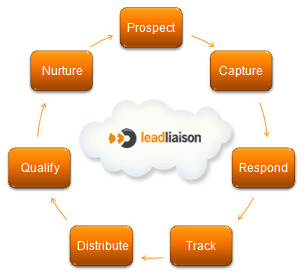The First Steps Toward Effective Lead Qualification
 Lead qualification is a multi-step process that moves suspects through your marketing pipeline and determines if they become a quality lead. It all starts with a lead inquiry. In this post we’ll discuss the first steps toward effective lead qualification.
Lead qualification is a multi-step process that moves suspects through your marketing pipeline and determines if they become a quality lead. It all starts with a lead inquiry. In this post we’ll discuss the first steps toward effective lead qualification.
Lead Inquiry
The first step in lead qualification is generating a lead inquiry, which is an interest signal from a suspect. The suspect may be genuinely interested in your solution or his reaction to a marketing message could be just curiosity. It may be tough to differentiate the two based upon one contact; however, there are techniques, such as opt-in forms, that can indicate a higher level of interest.
Outbound or inbound marketing can be used to generate a lead inquiry. Whether the inquiry comes from digital assets or through offline engagements, if you don’t take every lead inquiry seriously you may be leaving money on the table.
In order to make lead qualification effective, you should review your online and offline marketing messages regularly. Are viewers taking action or moving on to the next solution? You rarely get a second chance to make a first impression, so if your response rate is minuscule, take the time to adjust the messages for maximum effectiveness.
Once a lead inquiry is received, it’s time to take the lead qualification process to the next step: lead capture.
Lead Capture
It is important to not let a lead slip away without making a second attempt. Lead generation programs, such as Lead Liaison’s Streamer™, allow companies to capture preliminary information without having to request it from the suspect. This allows you to capture enough information to be able to make a second contact.
Lead capturing can be automated. One of the more effective techniques is the lead capture page or landing page. The key is to provide enough compelling information or a strong marketing message on that page to compel a suspect to opt-in for future engagements.
An auto-responder should be used to connect immediately following a lead inquiry. Time is of the essence in this competitive world, so we recommend automation for every inquiry that is received. An auto-responder service can mean the difference between a lost opportunity and a sale. Basic auto-responder services are available for free, while more robust services can be purchased.
Like your lead inquiry assets, it’s important to review and refine lead capture assets so they accomplish their task on the first contact. Once there is enough information captured from a suspect, the lead should be entered into a lead scoring system.
Lead Scoring
A lead scoring matrix is crucial to qualifying suspects and prioritizing leads. There is no standard model that will apply to all industries but there are two commonly used criteria sets. The first set includes the physical, demographic, and firmographic data that is often easily captured through opt-in forms or webinar registrations. This information qualifies a lead according to relevance. Does the suspect work at a company that fits your lead profile? Does the company have the capacity to purchase your solution?
The second criteria set includes behavioral traits. This information can be captured through online activities, such as website visits or white paper downloads. By including online and offline marketing engagements, your lead scoring system can help determine which activities may lead to purchase decisions.
These are the preliminary stages of an effective lead qualification process. In our next post, we’ll discuss the advanced steps that move a lead from suspect to sales opportunity. To find out the most effective lead qualification process, contact us today!









